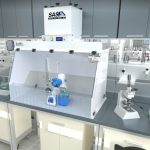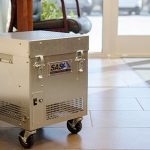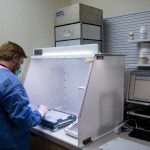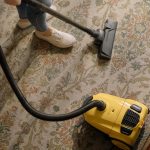To improve safety in the science classroom, educational facilities should utilize Fume Hoods and Air Cleaners. Fume Hoods, such as Ductless Fume Hoods or Exhaust Hoods, provide the first layer of defense against harmful fumes and particulate created from experiments, demonstrations, or studies. Chemistry Fume Hoods can also help protect from other hazards such… Learn More
SAS Clean Air Scholarship Winners 2022
Thank you so much for your patience. This year, we received over 400 entries, which is doubled from last year. It was very difficult to select only two winners from all of the creative and thoughtful entries. We’d like to thank everyone that entered for their time and effort. 1st Place Winner: Brandon Bishop ($2,500… Learn More
5 Air Quality Tips to Improve Work Efficiency
Do you know why it is important to increase the air quality in the workplace… …because when air quality is improved, work efficiency improves. This is mostly due to the decrease in health conditions caused by compromised air. Air quality decreases when levels of contaminants accumulate faster than they can be ventilated or eliminated; and… Learn More
Rotary Evaporator Fume Control
Rotary evaporators can release hazardous solvent fumes while using or cleaning the system, or while emptying the solvent trap (UCLA, 2010). Operators should consider fume inhalation risks and utilize respiratory engineering controls, such as a ductless fume hood or exhaust hood, to protect their safety and the overall laboratory’s safety. What are Rotary Evaporators? Rotary… Learn More
Improving Ventilation and Air Filtration to Help Prevent COVID Transmission in the Workplace
After two years of working from home, many companies have started searching for ways to get back to work while still protecting employees from COVID. The Center for Disease Control and Prevention (CDC) recommends utilizing a multi-layered protection approach including masks, social distancing, hand hygiene, vaccination, and improving the building’s ventilation (Ref. 1). Using… Learn More
SAS Clean Air Scholarship Winners
All of us at Sentry Air are astounded by the amount of creativity, thoughtfulness, time, energy, and knowledge that were expressed in each scholarship entry. We received over 200 entries with amazing depictions of “What Air Quality Means to Me?” through video, physical art, digital art, essays, podcasts, etc. We received so many amazing entries… Learn More
SAS Clean Air Scholarship
Introducing the SAS Clean Air Scholarship — Sentry Air Systems is launching a new scholarship program to support students and help them further their education with vital financial support. We hope to provide educational opportunities for students while helping to lessen the financial load. The SAS Clean Air Scholarship will award (1) $2,500 scholarship to… Learn More
Pharmaceutical Compounding… Are you doing it Safely?
Practicing safe pharmaceutical compounding helps protect the pharmacist from exposure to harmful substances and particulate, as well as preserve the safety of the medication for the patient. Compounding entails the creation of a drug customized to meet the unique needs of an individual patient (Ref. 1). A compounding pharmacist uses a licensed physician’s prescription to… Learn More
Stool Culture + Sentry Air Systems
What is Stool Culture? Stool culture is the process of testing a sample of stool in order to determine whether you have an infection in your lower digestive tract due to pathogenic germs such as bacteria, fungus, viruses, or protozoa. This test is used to identify the various types of bacteria that can cause disease… Learn More
Understanding Your Indoor Air Quality
Over the past few years, there has been a growing concern with overall Indoor Air Quality with pollutants being entered into the home and office space more frequently. As research has indicated, people are now spending roughly 90 percent of their time indoors, with a much higher risk of being exposed to health hazards that… Learn More

 Made in the USA
Made in the USA








